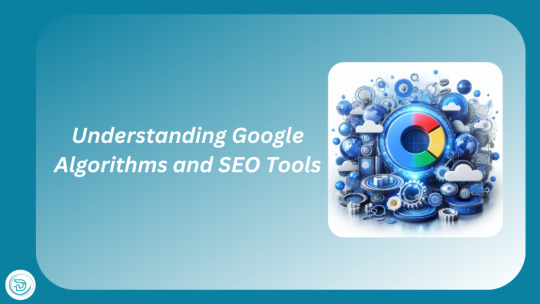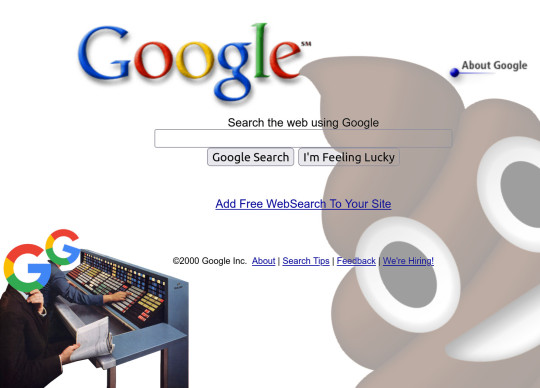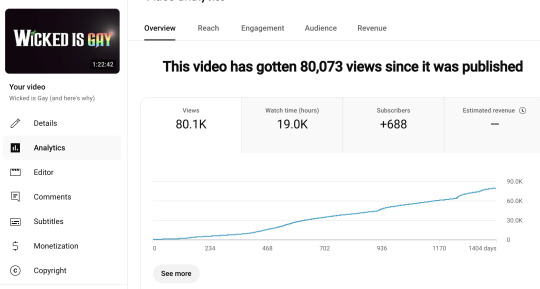#google algorithms
Explore tagged Tumblr posts
Text
Google Me Up: Unveiling the Future of Productivity with 'Add to Me' Integration
Introduction: In an era where information overload is a constant challenge, staying organized and efficient is more crucial than ever. Enter Google's groundbreaking feature – "Add Me To Google." This article delves into the intricacies of this tool, exploring how it's reshaping the digital landscape and revolutionizing the way we manage, access, and collaborate on information.
Mastering Digital Chaos - The sheer volume of information we encounter daily can be overwhelming. "Add to Me" emerges as a digital curator, offering a streamlined approach to collecting and categorizing various content types, including articles, images, and notes. Say goodbye to the chaos and hello to a seamlessly organized digital space.
The Unified Google Hub - "Add to Me" is not just a feature; it's an integral part of your Google ecosystem. This tool consolidates your digital world into a unified hub, eliminating the need to juggle between multiple apps or tabs. Whether you're working on a project, conducting research, or pursuing personal interests, everything you need is at your fingertips.
Enhanced Collaboration Dynamics - Building on Google's collaborative prowess, "Add Me To Google" takes teamwork to new heights. Share your meticulously curated collections effortlessly with colleagues, friends, or family, fostering a collaborative environment where everyone has instant access to a shared pool of resources.
Tailored Collections for Every Aspect of Life - Flexibility is a cornerstone of "Add to Me." Customize your collections to align with your diverse interests and responsibilities. From work-related research to travel plans, recipes, and hobby inspirations, this feature empowers you to curate information in a way that mirrors your unique lifestyle.
AI-Driven Smart Suggestions - Harnessing the power of artificial intelligence, "Add to Me" goes beyond passive collection. It actively suggests relevant content based on your preferences and search history. This proactive feature anticipates your needs, saving you time and effort by presenting information that aligns with your interests.
Fortified Security and Privacy Measures - Google places paramount importance on user security and privacy. Rest assured that your collected content is stored securely within your Google account, accessible only to you unless you choose to share it. "Add to Me" provides a secure and private space for your valuable information, ensuring peace of mind as you navigate the digital landscape.
Conclusion: "Google Me Up: Unveiling the Future of Productivity with 'Add Me To Google' Integration" invites you to embrace a new era of digital organization. Dive into the future of productivity by incorporating "Add to Me" into your daily routine, and witness the transformative power of a tool designed to simplify, enhance, and personalize your digital experience. Your personalized digital assistant awaits – ready to elevate the way you interact with the vast world of information.
#digital marketing#marketing#google algorithms#google updates#contentmarketing#artists on tumblr#add me to google
3 notes
·
View notes
Text
8 Major Google Algorithm Updates
Google is a search engine that drives the digital world, and processing billions of queries daily means Google algorithms decide how websites are ranked and how content is uncovered. Google announced a lot of major algorithms updates that enhance the search quality, get rid of spammy websites, and ensure a better user experience over the years. These updates are beneficial to know specifically if you are working in SEO to make sure you are aware of how to optimize websites to rank in Google’s ranking systems.
In this blog, we’ll take a closer look at eight big Google algorithm updates, discussing what they are and how they changed the face of search.

1. Panda Update (2011)
The Panda update (February 2011) One of the most influential algorithm changes ever made by Google, the Panda aimed to reduce the prominence of low-quality content in the search results. Web sites with “thin” content — which meant it either was too short, poorly written or irrelevant to users- experienced a drop in rankings.
Panda Algorithm aimed of reducing sites that had poor quality sites, farms and duplicate content. Web sites that depend on keyword stuffing or tactics to game search rankings by pumping out low-value content were hit hardest.
Impact of Panda:
A drop in the rankings was experienced by websites that used thin and keyword stuffed content.
Original websites of quality content benefited owing to the fact that they would stand a better chance of ranking in the first position.
This update forced content creators to focus on providing real, user-oriented value instead of just optimizing for search engines.
2. Penguin Update (2012)
The Penguin update was launched in April 2012 and was designed to target websites that were using any form of spam for building links in order to gain rankings incognito. Prior to this, Google ranking algorithms placed a huge amount of weight on backlinks as a ranking factor, thus allowing a lower barrier of entry for Getting websites to game search results by obtaining lower quality or irrelevant backlinks.
The purpose of the Penguin update was to impose sanctions on websites that engaged in buying links, joining link schemes or obtaining links from unrelated or low-authority sources. Sanctions were imposed on sites with unnatural link profiles, while those that used clean and organic link building strategies, thrived in visibility.
Read This Blog To Know - What Are Backlinks in SEO
Impact of Penguin:
Those who engaged in link buying or large-scale exchanging of links as a way of manipulating the link structure of their sites lost their positions largely.
High ranking naturally businesses which had organic backlinks got their positions raised.
Penguin obliged SEOs to obtain only clean and quality backlinks and seek to avoid any grey area practice.
3. Hummingbird Update (2013)
Released in August 2013, the Hummingbird update was a substantive change in the ways Google performed the interpretation of search queries. In contrast with the former updates which largely concentrated on specific signal such as keywords or links, Hummingbird emphasized on a trademark in terms of understanding the intent behind a search query. It was aimed at enhancing Google’s capability to handle conversational search and consequently, context.
In view of the increase in the usage of voice search and NLP, Hummingbird tried to provide better results based on the perspective, not only keywords. Moreover, it was also oriented toward semantic search, modeling the inter-word relations and providing results according to the user’s needs, not the least square of the query.
Impact of Hummingbird:
Websites that optimized their content for long-tail keywords and natural language phrases performed better.
This update marked the beginning of a movement to focus on user interest and content relevance, rather than technical SEO strategies.
· Hummingbird also paved the way for the increasing importance of structured data as Google began to organize meaningful answers to user queries.
4. Pigeon Update (2014)
The Pigeon update, released in July 2014, aims to target local search results and provide relevant local search results. Pigeon leverages Google’s core features to improve local search accuracy by integrating traditional ranking signals, such as backlinks and content quality, with regional signals like proximity and relevance.
With the rise of mobile searches and local business queries, Pigeon has helped Google improve local search results and provide more accurate information to users. For example, a user searching for “restaurants near me” will get better and more relevant results based on location and proximity to the business.
Impact of Pigeon:
Local businesses that did not optimize their websites for local SEO experience saw reduced visibility.
Sites with strong local relationships and good backlink profiles see better local search results.
· This update highlights the importance of Google My Business listings, local listings, and user reviews for businesses targeting local audiences.
5. Mobile-Friendly Update (Mobilegeddon) (2015)
In April 2015, Google released a mobile-friendly update, commonly referred to as "Mobilegeddon." This update comes before mobile-optimized websites and mobile search results. Since most users access the internet via smartphones, Google understands the importance of providing users with a mobile-friendly experience.
Friendly extensions can update sites that are not optimized for mobile devices, causing them to drop in mobile search results rankings. Websites with responsive design, fast loading times, and a mobile-optimized user experience will see improved rankings.
Impact of Mobilegeddon:
Sites that are not mobile-friendly will see their rankings drop in mobile search results.
A mobile-friendly website with a responsive design will have a competitive advantage.
This update highlights the importance of taking a mobile-first approach to website design and SEO.
Learn - How to Improve Website Load Time
6. RankBrain Update (2015)
In 2015, Google introduced RankBrain, an artificial intelligence (AI) component powered by its core search algorithm. RankBrain was created to help Google better understand sophisticated or complex search queries by interpreting user intent and providing more relevant results.
RankBrain uses machine learning to adapt and improve its understanding of queries over time. The best way to handle long-tail queries, phrases, and other unusual search terms. With RankBrain, Google can return results that best match user intent, even when the search query doesn’t exactly match indexed content.
Impact of RankBrain:
RankBrain improves Google search results by allowing the algorithm to interpret user intent more effectively.
Sites that provide high-quality contextual content are favored.
SEO strategies are starting to focus more on understanding user intent and providing content that solves problems or answers questions.
7. Fred Update (2017)
The Fred update was launched in March 2017 and targets sites that violate Google’s guidelines for negative content and multi-site advertising. While Google has yet to confirm the details of Fred, many SEOs suggest that the update focuses on areas that are not good for the user experience, such as those that emphasize advertising too much or are low on content.
Fred places particular emphasis on sites that focus too much on ads and compelling links rather than creating content that provides real value to users. Sites with misleading ads, bad content, and too many links will lose their rankings.
Impact of Fred:
Sites with weak content, too many ads, or poor monetization strategies will be downgraded.
This update emphasizes the importance of providing valuable content and a great user experience.
Fred encourages website owners to create more user-friendly websites with good content and to avoid overloading users with ads.
8. Core Updates (2020-Present)
In recent years, Google has released several major updates throughout the year. This major update continues to improve how Google ranks sites based on factors such as content quality, user experience, authority, and trustworthiness.
Major updates do not target specific types of sites or issues, but rather affect the entire algorithm, making it more complex and consistent with user expectations. Websites that improve content, improve user experience, and build authority will benefit from major updates.
Impact of Core Updates:
Sites that provide high-quality, relevant content, a smooth user experience, and reliable authority will improve their rankings.
Sites that are considered low quality or outdated may cause rankings to drop.
The main update emphasizes the need for a complete SEO approach that combines on-page optimization, backlinks, technical SEO, and content quality.
Conclusion
Google algorithm updates are designed to improve the overall search experience for users by ensuring that the most relevant content is the best content. Over the years, these updates have been tweaked to focus on things like content quality, link building, mobile usability, and user intent.
It’s important for digital marketers and website owners to stay on top of these changes. By focusing on content quality, a good user experience, and organic SEO, websites can improve their chances of succeeding in search engines.
Understanding these algorithm updates not only helps you adapt to the changes, but also prepares websites for future improvements to Google’s search algorithms.
0 notes
Text
Google AI Overviews-Adapting Strategies for Advertisers
As Google expands its AI Overviews in Search results, advertisers must adapt their strategies to stay competitive. This article outlines five essential tactics to navigate the evolving paid search landscape, including broad match adoption, value-based bidding, multi-channel measurement, and leveraging Performance Max and Demand Gen campaigns. Continue reading to learn how to prepare for the…

View On WordPress
#digital advertising#marketing strategy#Google AI#AI advertising#advertising strategies#Google AI overview#AI marketing#AI trends#Google Ads#AI technology#advertising tips#Google updates#marketing strategies#AI tools#AI in marketing#Google AI trends#AI optimization#digital marketing#AI for advertisers#advertising insights#marketing tips#AI advancements#Google algorithms#advertising trends#AI marketing tools#AI insights#digital ad strategies#Google marketing#AI integration#marketing innovation
0 notes
Text
Cracking the Code: A Deep Dive into Google's Ever-Evolving Algorithms
"Unlock the secrets of Google's algorithms and elevate your digital presence! Join us as we delve into the intricacies of SEO, content relevance, and user experience. Discover how to optimize your website for better search rankingS.

View On WordPress
#digital marketing#digital marketing career#GOOGLE ALGORITHMS#off page#ON PAGE SEO#online marketing#search-engine-optimization#seo#seo career
1 note
·
View note
Text
Understanding Google Algorithms and SEO Tools
Is there a correlation between Google algorithms and SEO tools? Explore our blog for a detailed Information 👇 #googlealgorithms #seotools #seoservices #seoforstartups #digitalmarketingservices
Is there a correlation between Google algorithms and SEO tools? In simpler terms, SEO tools are often created based on the understanding of search engine algorithms. These tools assist marketers in implementing effective strategies by providing insights into how algorithms evaluate and rank content. By using SEO tools, marketers can adapt their approaches to align with algorithmic preferences,…

View On WordPress
0 notes
Text
In-Depth Analysis: SEO vs. SMO - The Battle for Online Engagement

Introduction:
In the ever-changing realm of digital marketing, the quest for online visibility and engagement is relentless. Marketers and businesses are in a constant pursuit of effective strategies to make their mark in the vast expanse of the internet. Two heavyweights in this arena are Search Engine Optimization (SEO) and Social Media Optimization (SMO). This in-depth analysis aims to dissect the intricacies of SEO and SMO, unravelling their significance in the context of Google algorithms and their profound impact on online engagement.
Unveiling the Dynamics of SEO and Its Nexus with Google Algorithms:
At the core of online marketing, Search Engine Optimization (SEO) is the linchpin designed to elevate a website's visibility on Search Engine Results Pages (SERPs). Google, the undisputed giant in the search engine domain, employs sophisticated algorithms to gauge the relevance and authority of web pages. Keywords take centre stage in SEO, with Google's algorithms scrutinizing content to align with user queries. The art lies in crafting content with strategically positioned keywords to ascend the ranks on SERPs.
The Pinnacle: Google Algorithms as the Architect of Search Engine Triumph The driving force behind Google's search engine lies in its algorithms, perpetually evolving to furnish users with the most pertinent and valuable results. Keeping abreast of these algorithmic metamorphoses is paramount for SEO practitioners. Elements such as content quality, backlinks, mobile-friendliness, and page speed stand as pivotal factors in the intricate web of Google's algorithms.
Navigating the Online Engagement Odyssey with SEO:
SEO isn't merely a dance to appease algorithms; it's about crafting a seamless and enriching experience for users. Content that is not only high-quality but also addresses user queries takes the lead in Google's ranking hierarchy. Integrating long-tail keywords, optimizing meta tags, and ensuring a mobile-responsive design form the bedrock of SEO, fostering an environment conducive to heightened online engagement.
SMO: Unleashing the Power of social media for Digital Prominence:
In stark contrast, Social Media Optimization (SMO) revolves around harnessing the potential of social media platforms to amplify a brand's online presence. With platforms like Facebook, Instagram, Twitter, and LinkedIn boasting billions of users, SMO becomes the conduit for businesses to directly engage with their audience. Sharing content, sparking conversations, and cultivating a community stand as the pillars of SMO strategies.
Online Engagement Renaissance through SMO:
The impact of social signals on search engine rankings remains a hot topic among digital marketers. Although Google officially denies social signals as direct ranking factors, there's a growing body of evidence suggesting that social media engagement indirectly influences SEO. Shares, likes, and comments contribute to heightened visibility, steering traffic and potentially swaying Google algorithms.
Striking the Perfect Harmony:
In the labyrinth of SEO vs. SMO, equilibrium is the golden key. Merging these strategies can amplify online engagement to unprecedented levels. Picture this: sharing SEO-optimized blog posts on social media platforms to draw in a wider audience. Similarly, social media profiles adorned with finely crafted bios and strategically placed keywords become beacons of discoverability.
Conclusion:
In the dynamic expanse of online marketing, the symbiosis between SEO and SMO is paramount for achieving peak online engagement. Grasping the intricacies of Google algorithms, integrating SEO best practices, and leveraging the vast reach of social media channels collectively contribute to forging a formidable online presence. As businesses navigate the digital labyrinth, mastering the delicate balance between SEO and SMO emerges as the linchpin for standing out in the fiercely competitive online arena.
#Google algorithms#online engagement.#learnwithattitudeacademy#attitude academy#enrollnow#bestcourse#attitude tally academy#digital marketing course in uttam nagar and yamuna vihar#digtal
0 notes
Text
Decoding Google's 2023 Core Updates: Enhancing Search Quality and Relevance
Decoding Google's 2023 Core Updates: Enhancing Search Quality and Relevance #Googlealgorithms #GoogleCoreupdates #SEO #Searchrankings #Websiteoptimization #Google
In the dynamic realm of online presence, staying ahead of the curve requires a keen understanding of Google’s ever-evolving algorithms. The year 2023 witnessed a series of pivotal shifts as Google rolled out four core updates, each a force shaping the landscape of search rankings. From March to November, these updates not only reflected Google’s commitment to enhancing search quality but also…

View On WordPress
#August 2023 Core Update#Content quality#Core Update#Core updates#E-A-T#expertise#Google#Google algorithms#March 2023 Core Update#November 2023 Core Update#October 2023 Core Update#Ranking#Search Quality#Search rankings#SEO#User Experience#Webmaster#Webmaster guidelines#Website Optimization
0 notes
Text
youtube
0 notes
Text
Google’s enshittification memos

[Note, 9 October 2023: Google disputes the veracity of this claim, but has declined to provide the exhibits and testimony to support its claims. Read more about this here.]

When I think about how the old, good internet turned into the enshitternet, I imagine a series of small compromises, each seemingly reasonable at the time, each contributing to a cultural norm of making good things worse, and worse, and worse.
Think about Unity President Marc Whitten's nonpology for his company's disastrous rug-pull, in which they declared that everyone who had paid good money to use their tool to make a game would have to keep paying, every time someone downloaded that game:
The most fundamental thing that we’re trying to do is we’re building a sustainable business for Unity. And for us, that means that we do need to have a model that includes some sort of balancing change, including shared success.
https://www.wired.com/story/unity-walks-back-policies-lost-trust/
"Shared success" is code for, "If you use our tool to make money, we should make money too." This is bullshit. It's like saying, "We just want to find a way to share the success of the painters who use our brushes, so every time you sell a painting, we want to tax that sale." Or "Every time you sell a house, the company that made the hammer gets to wet its beak."
And note that they're not talking about shared risk here – no one at Unity is saying, "If you try to make a game with our tools and you lose a million bucks, we're on the hook for ten percent of your losses." This isn't partnership, it's extortion.
How did a company like Unity – which became a market leader by making a tool that understood the needs of game developers and filled them – turn into a protection racket? One bad decision at a time. One rationalization and then another. Slowly, and then all at once.
When I think about this enshittification curve, I often think of Google, a company that had its users' backs for years, which created a genuinely innovative search engine that worked so well it seemed like *magic, a company whose employees often had their pick of jobs, but chose the "don't be evil" gig because that mattered to them.
People make fun of that "don't be evil" motto, but if your key employees took the gig because they didn't want to be evil, and then you ask them to be evil, they might just quit. Hell, they might make a stink on the way out the door, too:
https://theintercept.com/2018/09/13/google-china-search-engine-employee-resigns/
Google is a company whose founders started out by publishing a scientific paper describing their search methodology, in which they said, "Oh, and by the way, ads will inevitably turn your search engine into a pile of shit, so we're gonna stay the fuck away from them":
http://infolab.stanford.edu/pub/papers/google.pdf
Those same founders retained a controlling interest in the company after it went IPO, explaining to investors that they were going to run the business without having their elbows jostled by shortsighted Wall Street assholes, so they could keep it from turning into a pile of shit:
https://abc.xyz/investor/founders-letters/ipo-letter/
And yet, it's turned into a pile of shit. Google search is so bad you might as well ask Jeeves. The company's big plan to fix it? Replace links to webpages with florid paragraphs of chatbot nonsense filled with a supremely confident lies:
https://pluralistic.net/2023/05/14/googles-ai-hype-circle/
How did the company get this bad? In part, this is the "curse of bigness." The company can't grow by attracting new users. When you have 90%+ of the market, there are no new customers to sign up. Hypothetically, they could grow by going into new lines of business, but Google is incapable of making a successful product in-house and also kills most of the products it buys from other, more innovative companies:
https://killedbygoogle.com/
Theoretically, the company could pursue new lines of business in-house, and indeed, the current leaders of companies like Amazon, Microsoft and Apple are all execs who figured out how to get the whole company to do something new, and were elevated to the CEO's office, making each one a billionaire and sealing their place in history.
It is for this very reason that any exec at a large firm who tries to make a business-wide improvement gets immediately and repeatedly knifed by all their colleagues, who correctly reason that if someone else becomes CEO, then they won't become CEO. Machiavelli was an optimist:
https://pluralistic.net/2023/07/28/microincentives-and-enshittification/
With no growth from new customers, and no growth from new businesses, "growth" has to come from squeezing workers (say, laying off 12,000 engineers after a stock buyback that would have paid their salaries for the next 27 years), or business customers (say, by colluding with Facebook to rig the ad market with the Jedi Blue conspiracy), or end-users.
Now, in theory, we might never know exactly what led to the enshittification of Google. In theory, all of compromises, debates and plots could be lost to history. But tech is not an oral culture, it's a written one, and techies write everything down and nothing is ever truly deleted.
Time and again, Big Tech tells on itself. Think of FTX's main conspirators all hanging out in a group chat called "Wirefraud." Amazon naming its program targeting weak, small publishers the "Gazelle Project" ("approach these small publishers the way a cheetah would pursue a sickly gazelle”). Amazon documenting the fact that users were unknowingly signing up for Prime and getting pissed; then figuring out how to reduce accidental signups, then deciding not to do it because it liked the money too much. Think of Zuck emailing his CFO in the middle of the night to defend his outsized offer to buy Instagram on the basis that users like Insta better and Facebook couldn't compete with them on quality.
It's like every Big Tech schemer has a folder on their desktop called "Mens Rea" filled with files like "Copy_of_Premeditated_Murder.docx":
https://doctorow.medium.com/big-tech-cant-stop-telling-on-itself-f7f0eb6d215a?sk=351f8a54ab8e02d7340620e5eec5024d
Right now, Google's on trial for its sins against antitrust law. It's a hard case to make. To secure a win, the prosecutors at the DoJ Antitrust Division are going to have to prove what was going on in Google execs' minds when the took the actions that led to the company's dominance. They're going to have to show that the company deliberately undertook to harm its users and customers.
Of course, it helps that Google put it all in writing.
Last week, there was a huge kerfuffile over the DoJ's practice of posting its exhibits from the trial to a website each night. This is a totally normal thing to do – a practice that dates back to the Microsoft antitrust trial. But Google pitched a tantrum over this and said that the docs the DoJ were posting would be turned into "clickbait." Which is another way of saying, "the public would find these documents very interesting, and they would be damning to us and our case":
https://www.bigtechontrial.com/p/secrecy-is-systemic
After initially deferring to Google, Judge Amit Mehta finally gave the Justice Department the greenlight to post the document. It's up. It's wild:
https://www.justice.gov/d9/2023-09/416692.pdf
The document is described as "notes for a course on communication" that Google VP for Finance Michael Roszak prepared. Roszak says he can't remember whether he ever gave the presentation, but insists that the remit for the course required him to tell students "things I didn't believe," and that's why the document is "full of hyperbole and exaggeration."
OK.
But here's what the document says: "search advertising is one of the world's greatest business models ever created…illicit businesses (cigarettes or drugs) could rival these economics…[W]e can mostly ignore the demand side…(users and queries) and only focus on the supply side of advertisers, ad formats and sales."
It goes on to say that this might be changing, and proposes a way to balance the interests of the search and ads teams, which are at odds, with search worrying that ads are pushing them to produce "unnatural search experiences to chase revenue."
"Unnatural search experiences to chase revenue" is a thinly veiled euphemism for the prophetic warnings in that 1998 Pagerank paper: "The goals of the advertising business model do not always correspond to providing quality search to users." Or, more plainly, "ads will turn our search engine into a pile of shit."
And, as Roszak writes, Google is "able to ignore one of the fundamental laws of economics…supply and demand." That is, the company has become so dominant and cemented its position so thoroughly as the default search engine across every platforms and system that even if it makes its search terrible to goose revenues, users won't leave. As Lily Tomlin put it on SNL: "We don't have to care, we're the phone company."
In the enshittification cycle, companies first lure in users with surpluses – like providing the best search results rather than the most profitable ones – with an eye to locking them in. In Google's case, that lock-in has multiple facets, but the big one is spending billions of dollars – enough to buy a whole Twitter, every single year – to be the default search everywhere.
Google doesn't buy its way to dominance because it has the very best search results and it wants to shield you from inferior competitors. The economically rational case for buying default position is that preventing competition is more profitable than succeeding by outperforming competitors. The best reason to buy the default everywhere is that it lets you lower quality without losing business. You can "ignore the demand side, and only focus on advertisers."
For a lot of people, the analysis stops here. "If you're not paying for the product, you're the product." Google locks in users and sells them to advertisers, who are their co-conspirators in a scheme to screw the rest of us.
But that's not right. For one thing, paying for a product doesn't mean you won't be the product. Apple charges a thousand bucks for an iPhone and then nonconsensually spies on every iOS user in order to target ads to them (and lies about it):
https://pluralistic.net/2022/11/14/luxury-surveillance/#liar-liar
John Deere charges six figures for its tractors, then runs a grift that blocks farmers from fixing their own machines, and then uses their control over repair to silence farmers who complain about it:
https://pluralistic.net/2022/05/31/dealers-choice/#be-a-shame-if-something-were-to-happen-to-it
Fair treatment from a corporation isn't a loyalty program that you earn by through sufficient spending. Companies that can sell you out, will sell you out, and then cry victim, insisting that they were only doing their fiduciary duty for their sacred shareholders. Companies are disciplined by fear of competition, regulation or – in the case of tech platforms – customers seizing the means of computation and installing ad-blockers, alternative clients, multiprotocol readers, etc:
https://doctorow.medium.com/an-audacious-plan-to-halt-the-internets-enshittification-and-throw-it-into-reverse-3cc01e7e4604?sk=85b3f5f7d051804521c3411711f0b554
Which is where the next stage of enshittification comes in: when the platform withdraws the surplus it had allocated to lure in – and then lock in – business customers (like advertisers) and reallocate it to the platform's shareholders.
For Google, there are several rackets that let it screw over advertisers as well as searchers (the advertisers are paying for the product, and they're also the product). Some of those rackets are well-known, like Jedi Blue, the market-rigging conspiracy that Google and Facebook colluded on:
https://en.wikipedia.org/wiki/Jedi_Blue
But thanks to the antitrust trial, we're learning about more of these. Megan Gray – ex-FTC, ex-DuckDuckGo – was in the courtroom last week when evidence was presented on Google execs' panic over a decline in "ad generating searches" and the sleazy gimmick they came up with to address it: manipulating the "semantic matching" on user queries:
https://www.wired.com/story/google-antitrust-lawsuit-search-results/
When you send a query to Google, it expands that query with terms that are similar – for example, if you search on "Weds" it might also search for "Wednesday." In the slides shown in the Google trial, we learned about another kind of semantic matching that Google performed, this one intended to turn your search results into "a twisted shopping mall you can’t escape."
Here's how that worked: when you ran a query like "children's clothing," Google secretly appended the brand name of a kids' clothing manufacturer to the query. This, in turn, triggered a ton of ads – because rival brands will have bought ads against their competitors' name (like Pepsi buying ads that are shown over queries for Coke).
Here we see surpluses being taken away from both end-users and business customers – that is, searchers and advertisers. For searchers, it doesn't matter how much you refine your query, you're still going to get crummy search results because there's an unkillable, hidden search term stuck to your query, like a piece of shit that Google keeps sticking to the sole of your shoe.
But for advertisers, this is also a scam. They're paying to be matched to users who search on a brand name, and you didn't search on that brand name. It's especially bad for the company whose name has been appended to your search, because Google has a protection racket where the company that matches your search has to pay extra in order to show up overtop of rivals who are worse matches. Both the matching company and those rivals have given Google a credit-card that Google gets to bill every time a user searches on the company's name, and Google is just running fraudulent charges through those cards.
And, of course, Google put this in writing. I mean, of course they did. As we learned from the documentary The Incredibles, supervillains can't stop themselves from monologuing, and in big, sprawling monopolists, these monologues have to transmitted electronically – and often indelibly – to far-flung co-cabalists.
As Gray points out, this is an incredibly blunt enshittification technique: "it hadn’t even occurred to me that Google just flat out deletes queries and replaces them with ones that monetize better." We don't know how long Google did this for or how frequently this bait-and-switch was deployed.
But if this is a blunt way of Google smashing its fist down on the scales that balance search quality against ad revenues, there's plenty of subtler ways the company could sneak a thumb on there. A Google exec at the trial rhapsodized about his company's "contract with the user" to deliver an "honest results policy," but given how bad Google search is these days, we're left to either believe he's lying or that Google sucks at search.
The paper trail offers a tantalizing look at how a company went from doing something that was so good it felt like a magic trick to being "able to ignore one of the fundamental laws of economics…supply and demand," able to "ignore the demand side…(users and queries) and only focus on the supply side of advertisers."
What's more, this is a system where everyone loses (except for Google): this isn't a grift run by Google and advertisers on users – it's a grift Google runs on everyone.

If you'd like an essay-formatted version of this post to read or share, here's a link to it on pluralistic.net, my surveillance-free, ad-free, tracker-free blog:
https://pluralistic.net/2023/10/03/not-feeling-lucky/#fundamental-laws-of-economics


My next novel is The Lost Cause, a hopeful novel of the climate emergency. Amazon won't sell the audiobook, so I made my own and I'm pre-selling it on Kickstarter!
#pluralistic#enshittification#semantic matching#google#antitrust#trustbusting#transparency#fatfingers#serp#the algorithm#telling on yourself
6K notes
·
View notes
Text
YouTube: I see that you're watching video reviews of recently published real-time strategy games. I know exactly what you'll want to see next – a series of gameplay demonstrations of a decade-old RPGMaker title where you inflate your party members big and round and use them to solve block-pushing puzzles.
Me:

#life#gaming#video games#youtube#the algorithm#i swear ever since google jumped on the generative language model bandwagon their algorithm has gotten dumber in deeply bizarre ways
673 notes
·
View notes
Text
Google Me: The Ultimate Tutorial on Adding Yourself to Google
In the fast-paced digital landscape, establishing a strong online presence is more crucial than ever. One effective way to enhance your visibility is by ensuring that you can be easily found on search engines, and what better search engine to be present on than Google? In this comprehensive tutorial, we'll guide you through the process of add me to Google, ensuring that you stand out in the vast online world.
Step 1: Create a Google Account
The first thing you need to do is create a Google Account. If you already have a Google Account, you can skip this step.
To create a Google Account, go to https://… and click on the "Create account" button.
Enter your first and last name, email address, and a password. Then, click on the "Next" button.
Google will ask you to provide some additional information, such as your phone number and birthday. You are not required to provide this information, but it can help protect your account.
Once you have entered all of the required information, click on the "Create account" button.
Step 2: Set Up a Google Profile
Now that you have a Google Account, you can create a Google Profile. This is a public profile that will appear in Google Search results and other Google products.
To create a Google Profile, go to https://sites.google.com/create and click on the "Get Started" button.
Enter your name, email address, and website. You can also add a photo, bio, and links to your social media profiles.
Once you have entered all of the information, click on the "Create profile" button.
Step 3: Optimize Your Google Profile
Make your Google Profile stand out by optimizing it for search engines. Use relevant keywords that people might use when looking for someone like you. Include details about your professional experience, skills, and interests. This will not only help you appear in relevant searches but also provide a comprehensive snapshot of who you are.
Here are a few tips for optimizing your Google Profile:
Use a relevant keyword in your name.
Add a photo and a bio.
Link to your website and social media profiles.
Get reviews from friends and colleagues.
By following these tips, you can help ensure that your Google Profile appears in the search results and that people can find you online.
Step 4: Be Active on Google Platforms
Google rewards activity, so engage with various Google platforms to increase your online presence. Consider using Google Photos, Google Drive, or even Google Docs regularly. This will contribute to a more dynamic and interconnected online profile, making it easier for people to discover you through Google searches.
Step 5: Connect Your Social Media Accounts
Linking your social media accounts to your Google Profile can further enhance your online presence. Google often displays social media profiles in search results, so connecting them ensures that your audience can explore more facets of your online identity.
Step 6: Regularly Update Your Information
The digital landscape is constantly evolving, and so should your online presence. Regularly update your Google Profile with new achievements, skills, or any changes to your contact information. This signals to Google that your profile is current and relevant, potentially boosting your visibility in search results.
Step 7: Monitor Your Google Presence
Once you've added yourself to Google, keep an eye on your online presence. Set up Google Alerts for your name to receive notifications whenever new content mentioning you is indexed by Google. This proactive approach allows you to manage and curate your online identity effectively.
By following these steps, you're not only adding yourself to Google but actively shaping how you're perceived in the digital realm. In a world where first impressions are often digital, taking control of your online presence is a proactive step toward success. Embrace the power of Google and ensure that when people search for you, they find the best version of who you are.
Conclusion
Add me to Google is a great way to increase your online presence and make it easier for people to find you. By following the steps in this tutorial, you can easily add yourself to Google Search and optimize your Google Profile.
I hope this tutorial has been helpful. If you have any questions, please leave a comment below.
#digital marketing#marketing#google updates#google algorithms#add me to google#contentmarketing#google ads#google account#google profile
0 notes
Text

I bring u more screenshots from Facebook suggestions that have seen into my soul
#Current Google search history features my hunt for chainmail patterns and tutorials.#And tips on how to get approval from both Fenris and Anders without angering the other in DA2#And lightsaber shopping.#My algorithms probably think I'm 14 or something
65 notes
·
View notes
Text
This is just a personal thing of mine but DO NOT FULLY TRUST THE FIRST ANSWER GOOGLE GIVES YOU!!!!!! I feel this is already known enough, but the fucking "ai overview" is often VERY wrong. It literally got some of the most basic well known Giant Squid/Colossal squid differences mixed up (which just really pissed me off, it's so easy to disprove it but some people will take it and trust it without any hesitation) so if you're serious about research, it's definitely best to ignore that and find a source you feel comfortable trusting. Always dig deeper for an answer instead of trusting the first thing you're given.
#correct research is really important to me#its really frustrating to see that google (a sorce that is supposed to provide correct info) has thrown that all away#just to hand their algorithm to ai#obviously im not saying it cant be right#but im saying take all of it with more tjan a grain of salt because its really risky to trust#misinformation is really easy to spread and its not as easy to reverse the damage that it actually does#geepods#squidgee
45 notes
·
View notes
Text

So the Wicked is Gay video just reach 80k views and 1) I obviously love that it still consistently gets views each day, especially since this video is nearing it's 4 (!) year anniversary.
but 2) i especially love to think that's bc every night about 50 people walk out of the theater and go "hmm 🤨"
#wicked#wicked the musical#gelphie#i just checked and this video didn't even have 10k in its first year (!)#so thank you ppl who keep googling 'is wicked gay?' the last 4 years#this video got copyright struck so i don't make a cent off of it#but i still appreciate it lol#SEO is weird man im just putting that out there#most videos plateau after a while which makes sense#and sometimes a video just keeps raking in the views and you just gotta shrug and go 'idk thats the algorithm lol'
109 notes
·
View notes
Note
Your art is the second image if you search up ronin btw

Idk why they say he's a movie character lmao
WHAW AIT WHAT
Okay I tried to look this up and I didn’t see anything of this sort BUT if I go onto google images I don’t have to scroll far down to find my art. What the fuck.
#is#is this what it’s like to be popular?????????#i am#so#HOW DID THIS HAPPEN#(also that’s a half joke i think google algorithms just be like that sometimes#but still.)#asks
33 notes
·
View notes